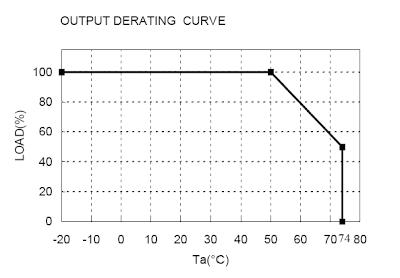What do they mean by Output Power Derating?
December 5, 2007
All power supplies have a specified “Operating Temperature Range”. For example, TDK-Lambda’s AC-DC switch-mode SWS600L series of 600 watt, single output power supplies have an operating temperature range from “-20°C to +74°C”. However, the spec also states: “…derating linearly to 50% load above 50°C”. What does this mean?
Please refer to Figure 1 below. Most power supply manufacturers provide this type of curve to make it easier for the end user to determine the maximum output power that can provided by a power supply at various operating or ambient temperatures. Ta = Temperature of the Ambient Air, or, the temperature of the air surrounding the power supply, especially the air at the intake of a fan-cooled supply. By comparing the “Operating Temperature Range” specification listed above to the derating curve, the following information can be seen:

In addition to the supply’s normal “operating temperature range” and output derating-curve, some supplies like this one, have a specified low-temperature “start-up” capability (i.e., -40°C). This means that the supply can “start-up” or be “turned-on” with an ambient temperature as low as -40°C (below the -20°C spec) and deliver 100% of its rated power; however, the supply’s output regulation, hold-up time, ripple & noise, and other specifications cannot be fully guaranteed until the supply warms up to at least -20°C. This cold temperature start-up is a nice feature to have, especially for outdoor-mounted applications. Once the supply is turned-on it will usually self-heat due to the heat generated by its internal electronic power components.





